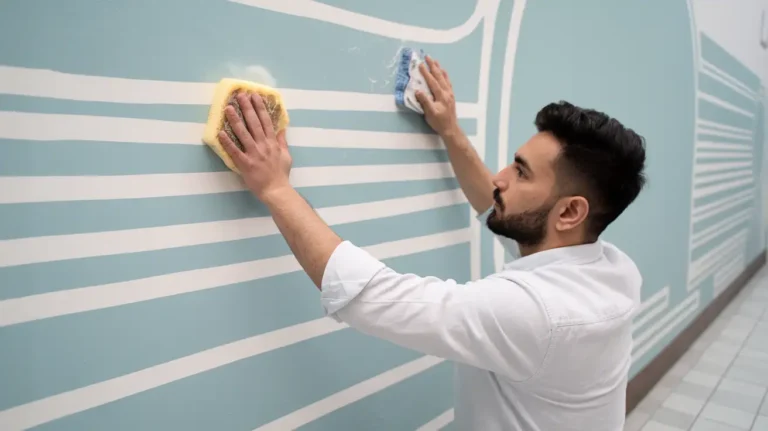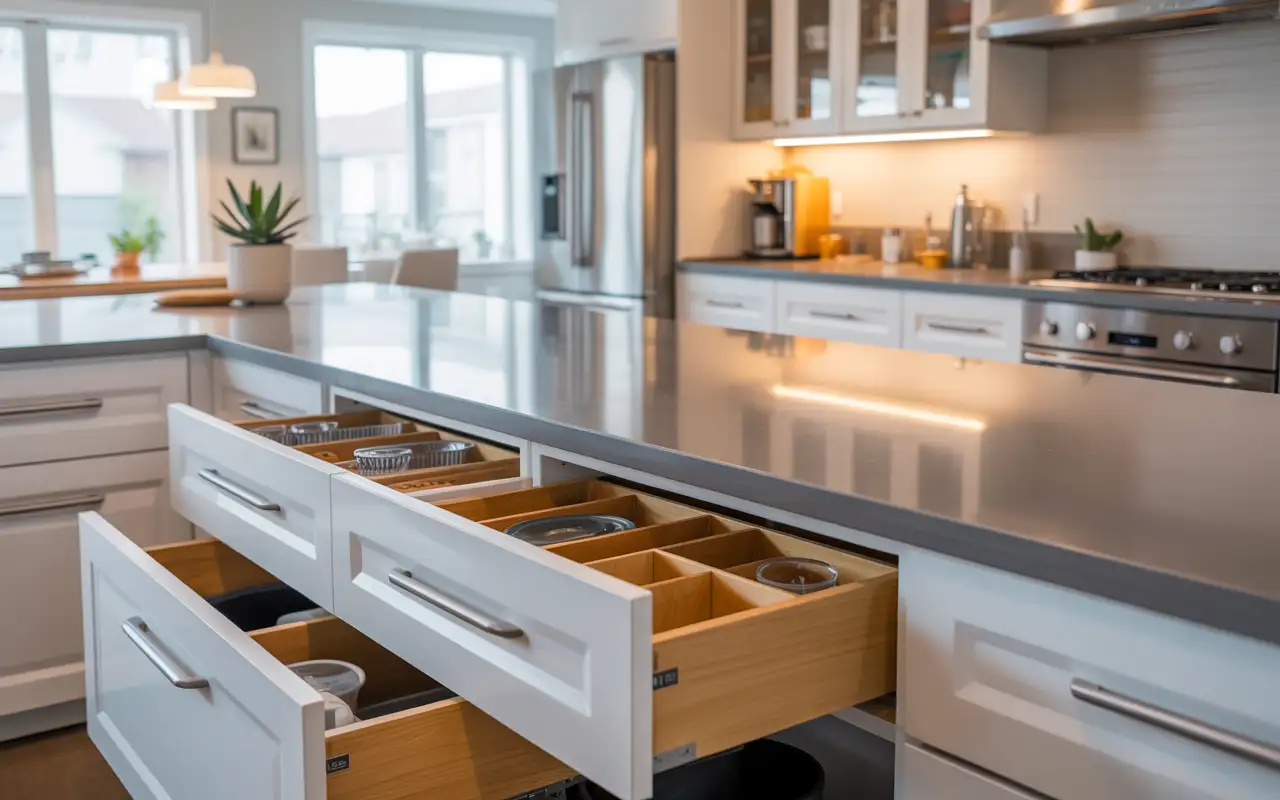Is your home’s charm fading under a layer of dust, grime, or mysterious smudges on your painted walls? Dirty walls can detract from your home’s appearance and even harbor allergens. Many homeowners struggle with how to clean painted walls without damaging the paint. This in-depth guide provides professional tips and step-by-step instructions to safely and efficiently clean your painted walls, restoring their fresh look.
Table of Contents
What You'll Need to Clean Painted Walls
Before we get started, grab these supplies. These are safe for most types of painted walls and help avoid tough stains or damage.
Wall Cleaning Supplies
- Soft sponge or microfiber cloths
- Bucket with warm water
- Mild dish soap (like Dawn)
- White vinegar (optional)
- Baking soda (for spot cleaning)
- Wall cleaner or Zep wall cleaner (optional)
- Wall mop (great for high or large walls)
- Dry towel or extra microfiber cloths for drying
If you’re worried about pets or kids, try eco-friendly wall-safe cleaners. In San Diego, dry indoor air and dust buildup are common so pick products that clean gently but thoroughly.
Tips for Cleaning Painted Walls
Cleaning painted walls requires a systematic approach. Following these tips will ensure you get the best results without damaging the paint. San Diego Home Remodeling recommends these steps for a spotless finish.
Preparation is Paramount:
- Clear the Area: Move all furniture away from the walls. Take down wall hangings, art, and remove outlet covers. This gives you clear access.
- Protect Your Floors: Lay down drop cloths or old sheets along the base of the walls. This catches any drips.
- Dust Thoroughly: Use your duster or vacuum with a soft brush. Start from the top of the wall and work your way down. Removing loose dust and cobwebs first prevents streaks when you start wiping. This is a crucial step for effective wall cleaning.
General Cleaning Techniques for Painted Surfaces:
- Always Spot Test First: This is the most important rule. Apply your chosen cleaning solution to a small, hidden area. An inconspicuous spot behind furniture or near the baseboard works well. Wait a few minutes to ensure it doesn’t damage or discolor the paint.
- Mix Your Solution: For general cleaning, add a few drops of mild dish soap to a bucket of warm water. Stir gently to mix. This creates a gentle wall cleaner.
- Work in Sections: Clean small sections of the wall at a time. Start from the bottom of the wall and work your way up. This method helps prevent dirty water from dripping down and causing streaks.
- Gentle Wiping Motion: Dip a soft sponge or microfiber cloth into your cleaning solution. Wring it out thoroughly. It should be damp, not dripping wet. Wipe gently in overlapping, vertical or horizontal strokes. Avoid scrubbing hard.
- Rinse (If Necessary): If you used a stronger solution or notice soap residue, lightly wipe the cleaned area. Use a second clean, damp cloth rinsed in plain water. This removes any leftover soap.
- Immediate Drying: Gently pat the cleaned area dry with a clean, soft towel. This prevents water spots and streaking. It also helps avoid water damage to the paint.
Tackling Specific Stains on Painted Walls:
Different types of stains require specific approaches. Knowing the best way to clean walls for each stain type is helpful.
- Grease and Fingerprints: These common dirty wall culprits respond well to mild dish soap and warm water. For stubborn grease, mix baking soda with a little water to form a paste. Gently apply it to the stain, let it sit briefly, then wipe away with a damp cloth.
- Scuff Marks: A “magic eraser” type sponge can be very effective for scuff marks. However, use it very gently and always spot test first. Too much pressure can remove paint or leave a dull spot.
- Crayon and Marker: For crayon marks, try a damp cloth with a small amount of baking soda paste. For marker or ink, a tiny amount of rubbing alcohol on a cotton swab can work. Use extreme caution and always spot test in an unseen area.
- Mildew: Mildew thrives in damp areas, even in San Diego’s climate. Mix one part white vinegar with three parts warm water. Spray this solution directly onto the mildew. Let it sit for a few minutes, then wipe clean with a damp cloth. Ensure good ventilation in the room while cleaning.
Cleaning Different Paint Finishes:
The type of paint on your walls affects how you should clean them. Understanding your paint finish helps you avoid damage the paint.
- Flat or Matte Paint: These finishes are the most delicate and porous. They absorb moisture more easily. Use the mildest solutions and the gentlest touch possible. Avoid excessive scrubbing or harsh chemicals, as they can easily leave shiny spots or even remove paint.
- Eggshell or Satin Paint: These are more durable than flat finishes but still require a gentle approach. Mild soap and warm water are usually sufficient for cleaning. They offer a good balance of durability and low sheen.
- Semi-Gloss or Gloss Paint: These are the most durable and easiest to clean due to their smooth, less porous surface. They can withstand slightly more vigorous cleaning. Still, always start with a gentle method and increase pressure only if needed.
Common Mistakes to Avoid:
Avoiding these common errors will protect your painted walls and ensure a successful cleaning process.
- Using Abrasive Cleaners or Tools: Never use steel wool, harsh scrubbers, or gritty cleaners. These can scratch or dull your paint finish, causing permanent damage. Stick to soft sponges and microfiber cloths.
- Over-Wetting the Walls: Too much water is a major problem. It can seep behind the paint, leading to bubbling, peeling, or even water damage to the drywall itself. Your cloth should be damp, not dripping.
- Scrubbing Too Hard: Aggressive scrubbing can remove paint, especially on flat finishes. Gentle wiping is usually all that’s needed. Let the cleaning solution do the work.
- Ignoring Spot Testing: Skipping this step is risky. Different paints react differently to cleaners. Always test in a hidden area first to prevent irreversible damage.
- Mixing Cleaning Products: Combining different cleaning products can create dangerous fumes. It can also lead to ineffective solutions or unexpected chemical reactions. Stick to one recommended cleaner at a time.
Final Thoughts
Knowing how to clean painted walls the right way saves time, protects your paint, and keeps your home looking great. It doesn’t take fancy cleaners or hard scrubbing, just a gentle hand and the right tools.
If you’ve cleaned and your walls still look dull or damaged, it might be time for a refresh. At San Diego Home Remodeling, we not only clean and prep walls we also offer expert-level Painting Services in San Diego to bring your walls back to life.
FAQs
What is the best thing to clean painted walls with?
Use a soft microfiber cloth, warm water, and a drop of mild dish soap like Dawn. Avoid anything too strong or rough. This combo is gentle, cheap, and safe.
How to clean walls without washing paint off?
Use a soft sponge, warm water, and a tiny bit of soap. Wipe in circles. Always test first, and never scrub. Stick to safe products like Zep wall cleaner or homemade solutions.
Is Dawn dish soap good for cleaning walls?
Yes. It’s gentle, cuts through grease, and works well on dirty walls without removing paint. Just mix a few drops in warm water.
What do professional painters use to clean walls?
Before painting, pros usually dust with microfiber cloths, then clean with warm water and mild soap. For heavy stains, some use Zep foaming wall cleaner or a wall mop for large areas.
Can you use Murphy’s Oil Soap on painted walls?
Yes but only on semi-gloss or glossy finishes. Avoid it on flat paint. Always test first and mix it with clean water before applying.








